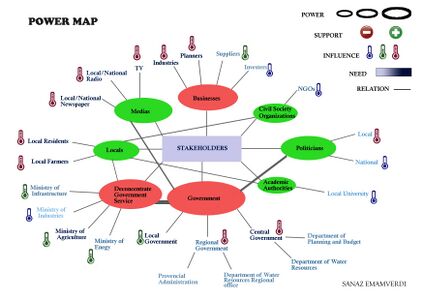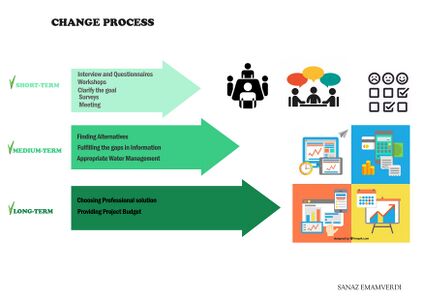LED 2016 Group E Democratic Change Process
Copy - paste the wiki text of the landscape democracy challenge you have selected for further discussion, then continue with the rest of the template, please place the references at the end now
Power Map
Create a visual representation of the stakeholder groups that are involved in your case. Try to cover the following aspects in your representation: Power (high, medium, low) / Support (positive, neutral, negative)/ Influence (high or low)/ Need (strong, medium, weak)+ also map the relationships between the stakeholder/power groups
- Power Map
Change Process
Look at the various methods and tools available and think how they can be applied creatively. Think about the needs of different stakeholder groups - you may need a methodical mix to address them all. Illustrate graphically how these methods/tools might be applied in a short, medium and long-term perspective.
- Change Process
Concluding reflections
- Reflect on your case and your change model. Potentials? Limitations?
- Which practices or practitioners have framed your work, including a brief narrative of the potential gaps you have filled in our knowledge as designers and planners of participation.(approx. 150 words)
There are numerous interesting tools which planners and designers can use them to encourage the public to engage in planning process such as, visual art techniques, storytelling, social-networking technology, exhibits, music, festivals and community gathering. A multiple of available tool options gives public the opportunity to find the most appropriate method of involvement for them. In addition, these creative tools or methods can increase the stakeholder’s involvement. These approaches can help the planners to achieve economic, social, environmental goals.
As a matter of fact, who knows the community better than people who live there? Therefore, participation can point out quickly that you will need to face certain issues, options or opportunities throughout the planning or decision making process.
We should remember we can learn from participation successes and failures to expand and improve participation practice in next projects in the future.
Public participation cannot undertaken lightly. Expectations maybe unrealistically raised undertaken lightly. Expectations maybe unrealistically raised unless government is clear from the outset about what exactly is being sought and what weight it will place on the input it receives. Good public participation practice therefore begins by making the objectives clear in advance, and by letting the participants know how their input will be factored into the final decision.
File:333.jpg|

